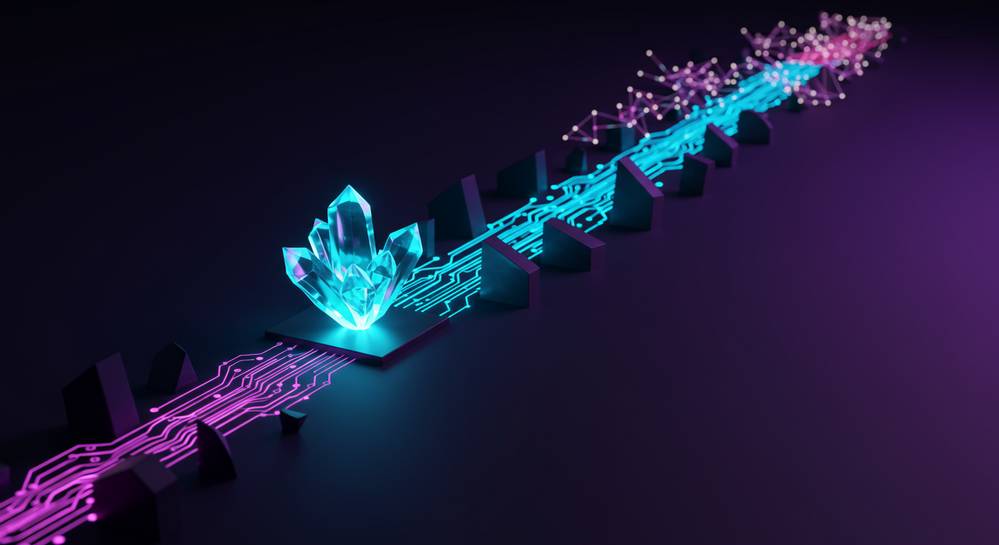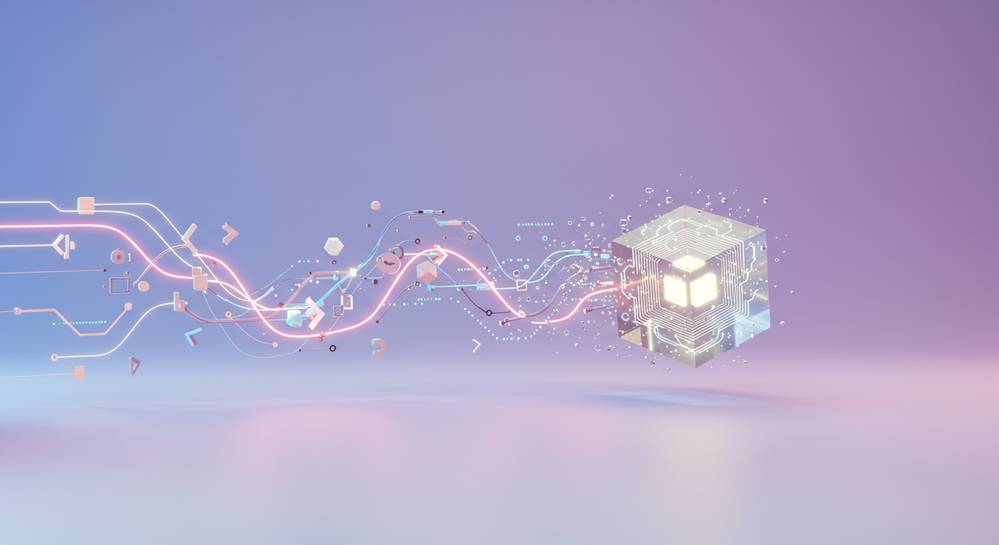Scalability and efficiency of blockchain for IoT data management aren’t just trendy buzzwords. They’re game changers in how we handle vast amounts of data flowing from everyday devices. Imagine countless devices chatting, exchanging information non-stop. Handling this chatter smartly is key. But here’s the clincher: current systems can’t keep up. They choke on this data deluge, becoming slowpokes in a race they need to win. That’s where blockchain steps in—like a superhero for data. It’s not about fitting in; it’s about redefining the race itself. Get ready to dive into a world where data moves like never before, securely and at lightning speed. Join me as I unravel this transformation, ensuring no device gets left behind in the digital epoch.
Understanding the Need for Scalability in IoT Blockchain
The Challenge of Managing Expanding IoT Data
Think of all the gadgets we have today. Watches, fridges, cars – they all connect to the internet. They’re part of the IoT, short for Internet of Things. These devices collect heaps of info every day. To keep it safe and useful, we need strong systems. That’s where blockchain comes in.
What’s blockchain for IoT? It’s like a digital record-keeper. It’s public and very secure. Each bit of data gets its own block on the chain. So, when my smartwatch records every step I take, blockchain keeps that safe.
But there’s a snag. More gadgets mean more data. The system gets jammed. It becomes slow, like a traffic jam on the internet! People and companies rely on this data. Slow systems can cause trouble. Picture a smart home getting the weather wrong – you might wear a sweater on a hot day!
We need something called ‘scalability’. This is tech talk for ‘Can it handle the load?’ Think bigger highways for data so there aren’t jams. For blockchain to be top-notch for IoT, it must grow with the data.
Identifying Bottlenecks in Current IoT Blockchain Frameworks
So, what’s holding us back? First, the blocks I talked about – they have limits. Each one can only hold so much data before it’s full. When too many transactions come in, some have to wait. This wait can slow down the whole system.
Second, these blocks get checked. Computers on the network, known as nodes, do this. They make sure everything’s correct. It keeps the data safe but also takes time. Think of it like a grocery checkout. If there’s just one open, the line gets long and slow. More checkouts, or nodes, means a faster line, but it’s tricky. We need the right balance.
The last hurdle is how the nodes talk to each other. They need to agree on the data’s truth. This agreement takes time when there are loads of nodes.
To sum it up, for IoT data management, blockchains must:
- Grow to hold more data.
- Work fast to check the data.
- Agree quickly to keep everything smooth.
This is our mission – to make blockchain fast, vast, and reliable. It’s a bit like being a superhero for the internet’s gadgets. We’re on it. We’re finding new ways to break these bottlenecks. IoT’s future depends on secure, snappy blockchain systems that get better as they grow. It’s a big job, but it’s super important for everyone – from big businesses to you and your smartwatch.
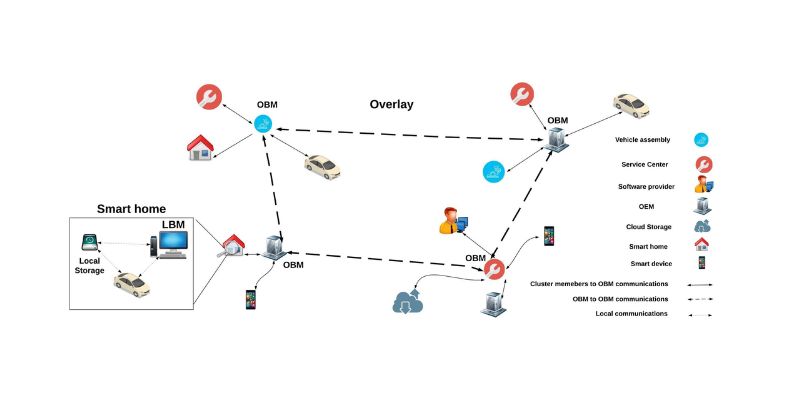
Advancing Efficiency with Smart Contract Automation
Streamlining Processes through Decentralized Control
In my work, I often tackle this simple yet tricky question: How do we make IoT smart with blockchain? The answer is smart contract automation. This automation lets us manage IoT devices with rules set in code. These smart contracts run on blockchain, a kind of shared database. They kick in when certain things happen, no human needed. The flow goes smooth, and the devices talk to each other fast. It’s like a well-oiled machine, where every part knows its job.
IoT data management solutions get a big boost with smart contracts. We see devices act on data right away. This cuts needless steps and gets rid of errors. Also, it saves cash in the long run. Why? Because machines don’t need breaks, don’t get tired and do jobs with zero slip-ups. This is a game changer for businesses that rely on IoT tech every day.
My focus is to make these processes better by using what I call decentralized IoT data control. Imagine a maze of roads. Now, remove all stop signs and lights. A mess, right? But what if every car knew when to go or stop without them? This is how decentralized control works. It’s all about trust in the system and in each other.
Case Studies: Efficiency Gains in Real-World IoT Implementations
Let’s dive into real stories to see this in action. Once, I worked with a supply chain company. They had trucks and goods moving non-stop. They needed a way to track all this without halting the workflow. With smart contract automation on a blockchain platform for IoT, we made their system smart.
The trucks now send data to the blockchain. The smart contracts check this data and make decisions. Do we need more goods at site A? Should we reroute truck B? No one is calling or emailing. No delays. The IoT devices and smart contracts talk, decide and act — round the clock.
In another case, an energy firm had thousands of sensors. They tracked energy use across a big area. We set up blockchain IoT solutions for them. Their sensors now report to smart contracts that control power flow and fix issues in no time. The result? Less wasted energy and more happy customers.
When we put in smart contract automation in IoT, the speed of blockchain transactions stuns me every time. A task that took hours now wraps up in seconds. And this speed means savings and faster moves in a market that waits for no one.
So, using smart contracts in blockchain IoT not only boosts speed. It means fewer mix-ups, real-time decisions, and more dollars saved. As we keep enhancing IoT with blockchain, these bonds get even stronger. And the whole thing — IoT meshed with blockchain — brings endless chances to play smart and big.
In IoT blockchain case studies we learn, we grow. And we see that the nuts and bolts of this tech can change not just how we work. It changes how we live. So we keep pushing, making sure each step is firm, each choice is wise. Because in the vast world of IoT and blockchain, every tick counts and every leap matters.
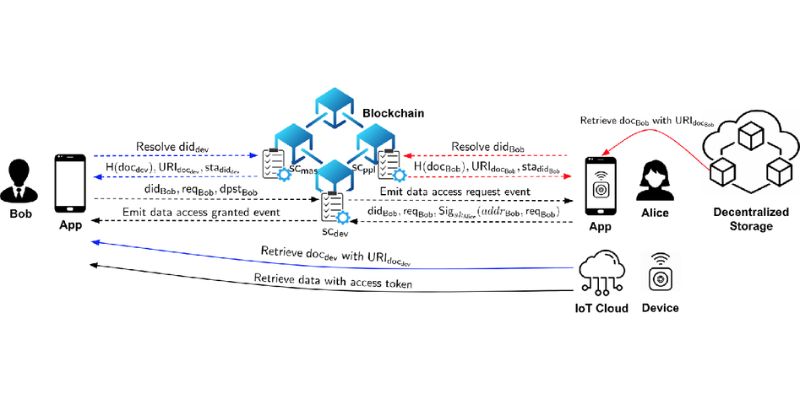
Balancing Security and Performance in IoT Data Exchange
Incorporating Robust Security Protocols for Data Integrity
When we talk about IoT data management solutions, we can’t miss out on safety. Picture this: your personal info is like a treasure. You wouldn’t leave it out in the open, right? So, in IoT, we protect this treasure with something called blockchain. It’s like a super secure lock-box that keeps your digital data safe.
Blockchain makes sure that the info stays the same. That means no one can sneak in and change your data. You ask, “How safe is blockchain for my IoT stuff?” Super safe! It’s like having an unbreakable safe! Your data stays put and unchanged unless you want it to move. That’s what we mean by data integrity.
Leveraging Edge Computing for Enhanced Data Management
Now, let’s dive into edge computing. It’s a cool tech that does data work right where it’s collected. This means faster and smarter data use, without sending it across the world first.
We use edge computing in blockchain IoT to keep things quick and smooth. It solves big problems like managing loads of data and keeping the performance top-notch. It’s like having a mini-computer right in your home that makes everything work super fast. This is part of what we call the efficiency metrics in IoT blockchain.
By using edge computing, we avoid clogged up networks. And we make the most of our devices without using too much stuff. This is how we boost IoT with blockchain while keeping resources in check.
So, blockchain and edge computing work hand in hand. Together, they make our IoT gadgets smart, swift, and safe. When we get this right, we unlock a whole new level of cool for our tech.
To wrap it up, IoT with blockchain is all about keeping our digital treasures locked tight and using cutting-edge tools to handle data like a boss. This way, your smart devices are not just nifty but super safe and fast, too!
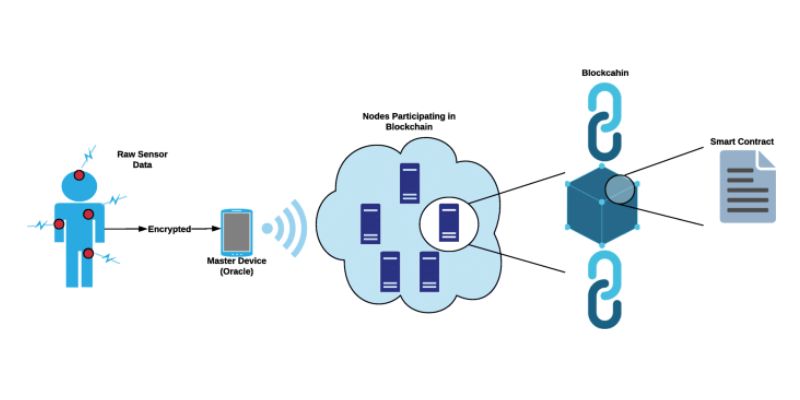
Overcoming Scalability Challenges with Innovative Technologies
Comparing Consensus Mechanisms: PoW vs. PoS for IoT
Blockchain can rock our world, especially when mixed with IoT. But, there’s a glitch – scalability. To handle this, we peek at how blockchain makes decisions. That’s called “consensus mechanisms”. There are two big types – Proof of Work (PoW) and Proof of Stake (PoS).
So, what’s better for IoT? PoW, like in Bitcoin, makes all computers solve tough puzzles to add new data. It’s safe but slow and gobbles up power like no one’s business. On the flip side, PoS picks a computer to validate data based on how much coin it holds. It’s greener and faster. For IoT, where loads of data come in fast and from everywhere, PoS often wins. It keeps things zippy and doesn’t strain the grid.
Yet, PoW has its charm. It’s tough as nails on security, and for some IoT setups, that’s key. Still, many IoT spaces love PoS for its quick stride and low power diet.
Integrating Sharding and Sidechains to Improve IoT Data Handling
Picture this: a crowded dance floor, that’s like a blockchain trying to keep up with loads of IoT data. Enter sharding and sidechains, our roomy dance hall with extra doors. Sharding splits the blockchain into pieces, making data jigs easier to handle. Each piece deals with its own data, but still rocks to the same tune.
Next up, sidechains. They’re like side rooms for private chats. Some IoT stuff needs extra care or a quick chat. Sidechains make that happen without bogging down the main blockchain party. They’re fast lanes for special cases.
And guess what? They both crank up the speed of blockchain transactions. That’s gold for IoT, where stuff happens fast and all the time.
So, what’s the deal with IoT blockchains using these tricks? It’s like a traffic-free highway for data trucks. It means we can pile on more IoT devices and not trip over slow speeds or crashes. This makes everything from smart homes to factories work better.
By using sidechains and sharding, we’re not just squeezing more out of IoT data management solutions. We’re making them shine, offering security without snail-paced action. It’s a win-win where blockchain platforms for IoT turn into data superhighways.
We’ve got to face it; IoT is exploding, and blockchain must keep pace. Tapping into sharding and sidechains, we’re paving the way for thousands, no, millions of devices talking at once without a hiccup. Now that’s how you marry up IoT and blockchain for a future that’s looking smarter by the minute.
In this blog post, we broke down major points about IoT blockchain scalability. We looked at how big IoT data is getting and the bottlenecks slowing current systems down. We explored ways smart contracts make things run smoother and checked out real success stories.
Then, we talked about keeping data safe without losing speed. Robust security steps and edge computing can play big roles here. Finally, we compared two techs for agreeing on data: PoW and PoS. We also saw how sharding and sidechains can handle more data better.
Scalability in IoT blockchain matters a lot. We need fast, safe ways to deal with growing data. The good news is, we’re on the way there with new ideas and tech. Let’s keep pushing forward. It’s exciting to see how these advances will shape our future.
Q&A :
How does blockchain enhance scalability in IoT data management?
Blockchain technology offers a decentralized network structure that allows IoT devices to interact directly with each other without requiring a central authority. This can significantly increase the network’s capacity to handle large numbers of transactions and data exchanges among devices. Additionally, through the use of consensus mechanisms and smart contracts, blockchain can automate many processes, potentially increasing efficiency and reducing the latency caused by centralized systems.
What are the efficiency benefits of using blockchain for IoT?
Blockchain technology brings several efficiency benefits to IoT by enabling secure, transparent, and immutable data transactions. First, by removing the need for third-party intermediaries, transaction times are reduced. Second, the immutable ledger ensures data integrity, providing a trustworthy source of information that streamlines decision-making processes. Lastly, smart contracts automate tasks and enforce agreements, minimizing human errors, and reducing administrative overhead.
Can blockchain resolve IoT security and privacy issues?
Blockchain’s inherent features, such as encryption and its immutable ledger, can significantly bolster the security and privacy of IoT ecosystems. By allowing data to be stored in a tamper-proof manner and giving users control over their data through encryption keys, blockchain mitigates the risk of unauthorized access and data breaches. Moreover, the transparency of blockchain helps identify and isolate compromised devices within the IoT network.
What are the challenges of integrating blockchain with IoT?
While blockchain holds potential for optimizing IoT data management, challenges remain concerning its integration. Scalability issues arise as the IoT network grows, given that current blockchain implementations have limitations on transaction throughput and speed. Likewise, the energy consumption and computational power required for blockchain can strain smaller IoT devices. Developing lightweight protocols and addressing interoperability among different IoT platforms and blockchain systems is also required for full integration.
How will the adoption of blockchain affect the future of IoT?
The adoption of blockchain is poised to transform IoT by enabling a new level of trust and collaboration among devices. In the future, it can lead to the creation of fully decentralized IoT networks that operate autonomously with improved security and less human intervention. However, as this technology matures, it will be fundamental to address current limitations to ensure that blockchain can handle the vast amount of data produced by IoT devices, providing a scalable and efficient data management system.


